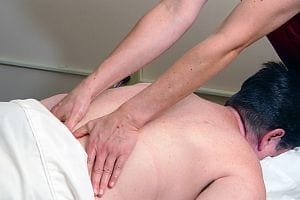statFor some women, it's about making an elegantement at special events or being a couple…

What is “Deep Tissue Massage”?
 Deep tissue massage is one of many types of manual therapy focused on the body’s soft tissues that has been shown to promote healing and relaxation. While the two may sound similar, deep tissue massage is not to be confused with “deep pressure” massage, which typically employs strong pressure uniformly across the entire body. Some other massage techniques, such as Shiatsu, work with the body’s meridians and pressure points in order to restore energy equilibrium in a manner similar to acupuncture. However, the deep tissue method is more focused on resolving specific pain and tension a person has in one part of their body.
Deep tissue massage is one of many types of manual therapy focused on the body’s soft tissues that has been shown to promote healing and relaxation. While the two may sound similar, deep tissue massage is not to be confused with “deep pressure” massage, which typically employs strong pressure uniformly across the entire body. Some other massage techniques, such as Shiatsu, work with the body’s meridians and pressure points in order to restore energy equilibrium in a manner similar to acupuncture. However, the deep tissue method is more focused on resolving specific pain and tension a person has in one part of their body.
Massage uses techniques to manipulate superficial layers as well as deeper layers of muscles and connective tissue. Massage therapists use a variety of techniques that involve applying pressure with the fingers, other parts of the hands, elbows, forearms, and instruments to perform the needed manipulation.
As the name suggests, the focus of deep tissue massage is the tissue that is located beneath the top layer of muscles, which is not generally reached by conventional massage. The purpose of the deep tissue method is to reduce extreme tension found in those deep muscles and the surrounding connective tissue that can cause chronic pain and put the musculoskeletal system out of alignment.
Anyone who is experiencing chronic muscle pain may be able to benefit from deep tissue massage. It is particularly useful for people whose work or hobbies involve strenuous physical activities and for people who have suffered injuries that require rehabilitation. Because of the intense methods used, deep tissue massage cannot and should not be applied across the entire body.
A deep tissue massage session often begins by warming up the body with a technique called kneading. This technique is used to prepare the body for the more intense massage that is to come. Without this preparation, injury is more likely. This method of massage can never be too deep, but it can be performed too quickly.
Oil is applied to allow the practitioner’s hands to glide easily across the person’s skin. Using the broad surface of the forearm, plus palms and fingers, the therapist can induce greater relaxation. By working slowly, the massage therapist is able to work the body in layers, applying greater and greater pressure with the forearm and elbow to reach the deeper tissues.
Knots of tension can be treated in a number of ways. One method is to use heavy pressure with the thumb directly on the tense muscle and simply hold a constant pressure for two to three breaths to help the knot relax. Another method involves rotating the thumb in small circles while maintaining high pressure. This helps increase the blood circulation into the tight muscle to help it receive the nourishment it needs for faster healing.
Once the area of focus has been worked on, lighter, finishing strokes help to integrate the focus area with the rest of the body. These help provide the client with a sense of calm and relaxation.
Deep tissue massage clients may experience a day or two of soreness in the area of the massage, but this should shortly be replaced by greater relaxation and relief from the pain of chronically tight muscles.




